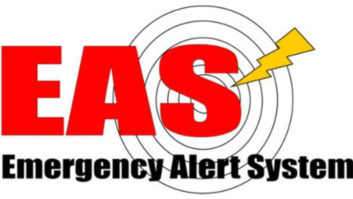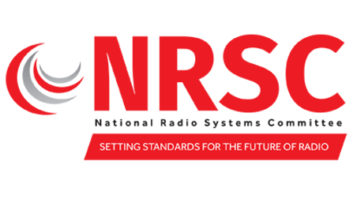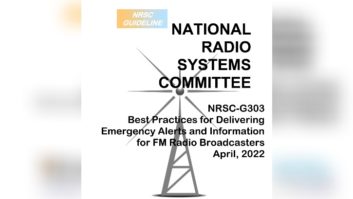Nov. 9, 2011: National EAS Test
Nov 2, 2011 9:29 PM, By Chriss Scherer, editor
While Radio magazine is a professional trade publication, this article was created for consumers who may not know about the Nov. 9, 2011, national EAS test.
Every now and then you have likely heard a test of the Emergency Alert System on your radio or TV. Broadcast stations are required to test their alerting equipment once a week at random times. They are typically preceded by the message “This is a test of the Emergency Alert System.” You then hear three blatty beeps of just less than 1 second each, then a disharmonic attention tone that lasts about 8 seconds, and the three shorter blatty beeps. After this cryptic-sounding break, the station returns to regular programming.

These weekly tests use specific test codes that EAS equipment can understand and recognize as a test.
The Emergency Alert System (EAS) was launched in 1994. It replaced the Emergency Broadcast System. While it’s likely you have heard a test, chances are you tune it out or even change stations when one occurs. The EAS is also used for weather alerts and AMBER Alerts, which you probably don’t tune out when you hear one.
On Nov.9, 2011 at 1 p.m. CT (2 p.m. ET, 11 a.m. PT) the EAS will be tested on the national level. While most EAS alerts are sent on the local, city or possibly state level, the system was designed to also distribute national alerts. In particular, an Emergency Action Notification (EAN) is an alert that would originate from the White House.
On Nov. 9, 2011, the EAS will test the national distribution of an alert through the EAS. The test is supposed to be carried on every radio, TV and cable station. One unique aspect to the national test is that it will not use a test code, but rather, it will use an real emergency event code (the EAN as noted earlier).
What does this mean to you? If you hear the test on a radio station, the beeps will still sound like beeps. There will be an audio message that will run for about 3 minutes that will explain what the test is. On the radio, this test will sound like an extended version of the weekly test you have heard before.
However, if you see the test on a TV or cable station, there will be a slight difference. The audio portion will be the same as you hear on the radio, but the tests on TV and cable also activate scrolling text across the screen (called a crawl). The crawl decodes information in the beeps to tell you what the EAS message is. When it’s a weekly test, the crawl says so. But because the national test is using a real event code, the crawl will not say that the message is a test. The crawl will say that an Emergency Action Notification (EAN) has been issued from Washington, DC.
To avoid confusion, TV and cable stations have been asked to place a large graphic that says the event is only a test. Some TV and cable stations may not show this slide, so this article was written to explain what is happening and let you know what to expect on Nov. 9, 2011.
Broadcasters have been preparing for this national test for several months. Because it’s the first national-level test, there could be some problems or errors. Again, this was written so you have some idea as to what will take place on Nov 9, 2011.












